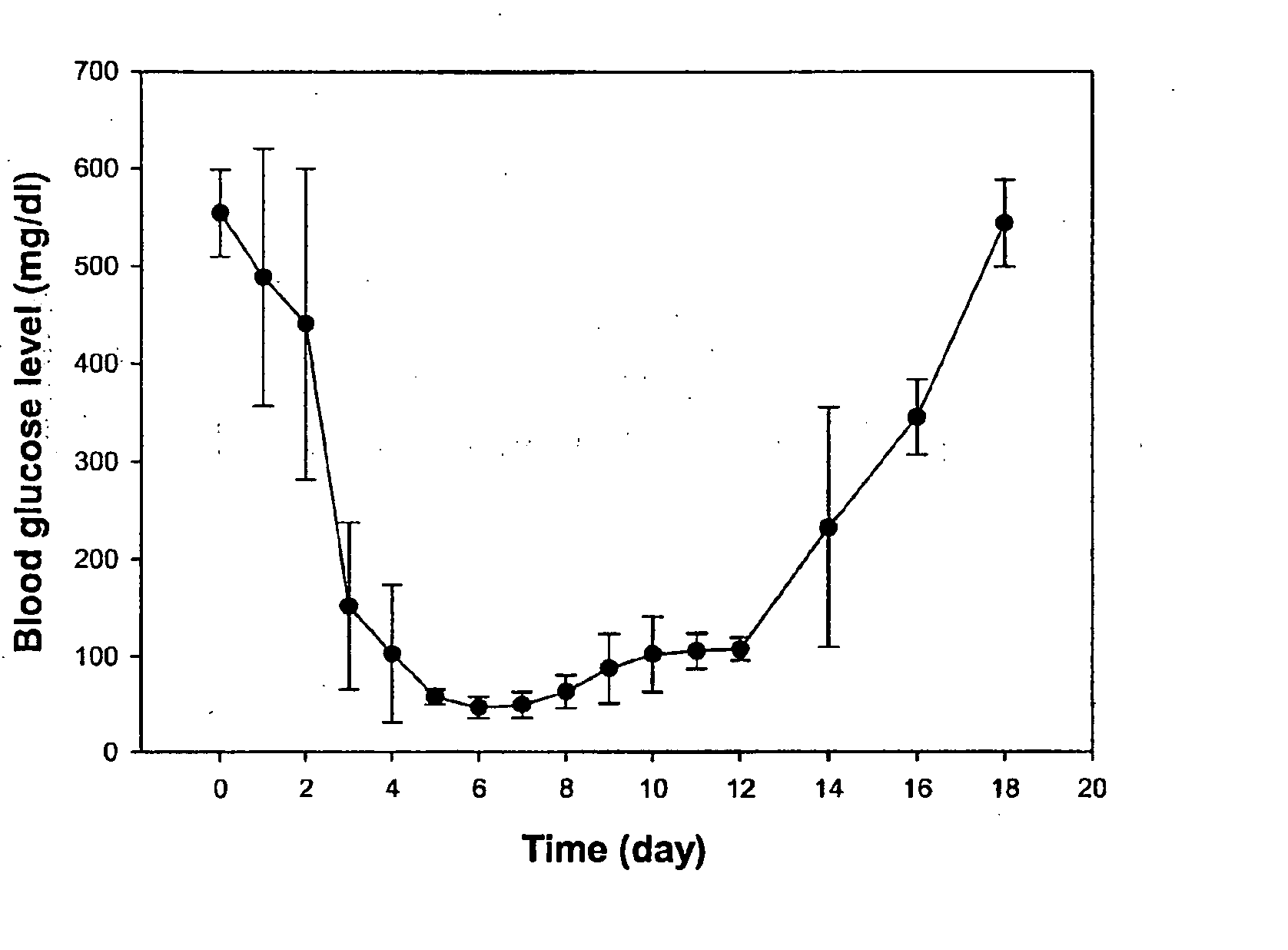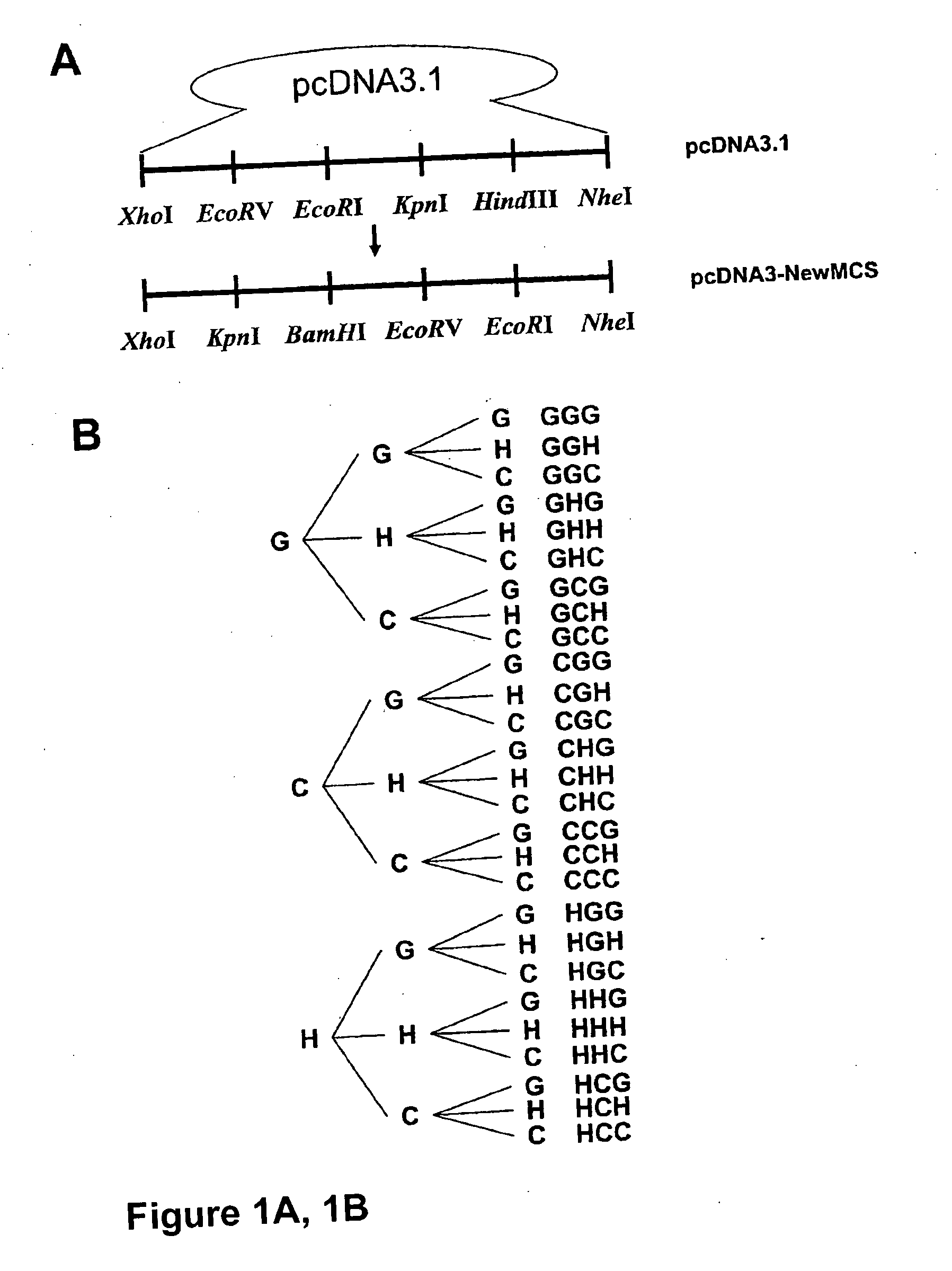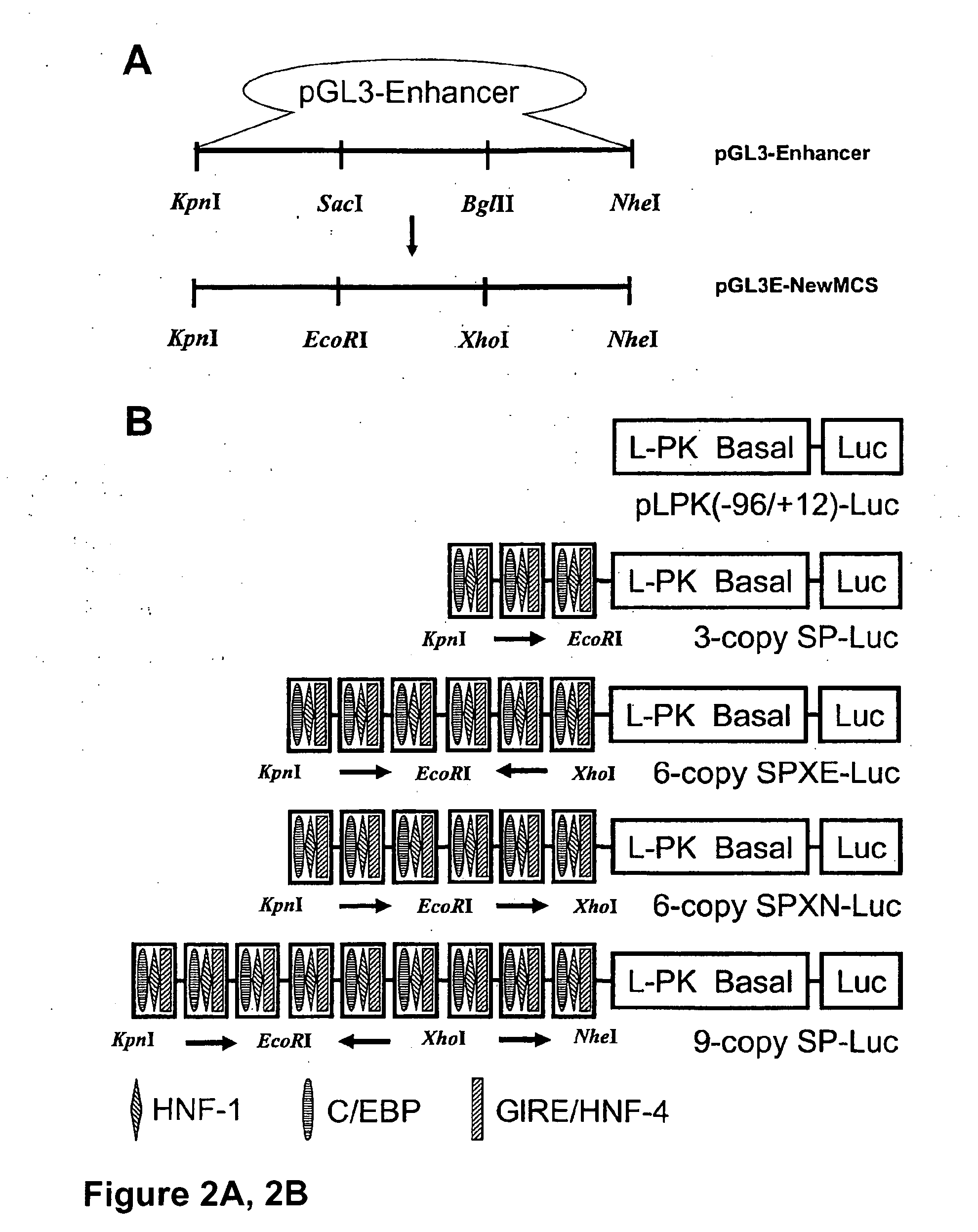Glucose inducible insulin expression and methods of treating diabetes
a technology of insulin expression and glucose, applied in the direction of dsdna viruses, drug compositions, metabolic disorders, etc., can solve the problems of insulin-dependent life, inability to accurately classify all patients, and chronic hyperglycemia
- Summary
- Abstract
- Description
- Claims
- Application Information
AI Technical Summary
Benefits of technology
Problems solved by technology
Method used
Image
Examples
example i
Insulin Gene Therapy for the Treatment of Type 1 Diabetes
[0131] This Example shows the generation and selection of multipartite glucose responsive promoters and their use for delivering regulated insulin levels to diabetic animals.
[0132] Synthetic promoter libraries were constructed by first generating a 3-copy module of cis elements. The module contained 3 copies of the transcription factor binding cis elements for the hepatocyte nuclear factor-1 (HNF-1), CAAT / enhancer binding protein (C / EBP) response element and the glucose-response element (GRE) in all possible combinations. As described below, the combinations were generated by sequential insertion of each cis-element in 3 restriction enzyme sites as shown in FIG. I B. These 3-copy modules were transferred to pLPK(−96 / +12)-Luc plasmids to generate 3-copy SP-Luc as shown in FIG. 2. In addition, 6-copy SP-Luc plasmids were generated by insertion of 3-copy modules into 3-copy SP-Luc plasmids.
[0133] Briefly, for construction of t...
PUM
| Property | Measurement | Unit |
|---|---|---|
| concentration | aaaaa | aaaaa |
| concentration | aaaaa | aaaaa |
| molecular weight | aaaaa | aaaaa |
Abstract
Description
Claims
Application Information
 Login to View More
Login to View More - R&D
- Intellectual Property
- Life Sciences
- Materials
- Tech Scout
- Unparalleled Data Quality
- Higher Quality Content
- 60% Fewer Hallucinations
Browse by: Latest US Patents, China's latest patents, Technical Efficacy Thesaurus, Application Domain, Technology Topic, Popular Technical Reports.
© 2025 PatSnap. All rights reserved.Legal|Privacy policy|Modern Slavery Act Transparency Statement|Sitemap|About US| Contact US: help@patsnap.com



